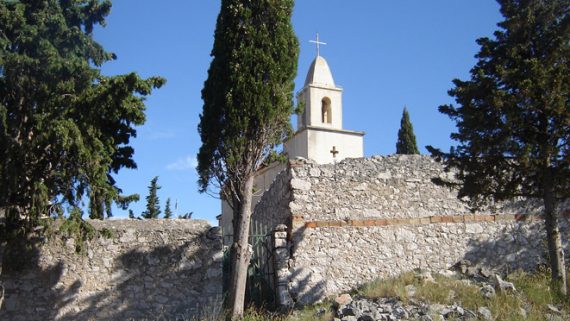Historical Heritage
The history of the village, the origin of the name and the habits of the people were best described by don Krsto Stošić in his book on the villages of the Šibenik district. From 13th to 17th century the name of the village underwent many changes. During this period it was called Jurjevgrad, which was the name of the fortress on the Sv. Nikola hill, as noted by the Venice commander and proveditor Leonardo Foscolo around 1650. There was also a Sv. Nikola church, while the fortress has since been reduced to ruins, which serve as a memento.
Šibenik records dating back to the middle of the 15th century mention names Tribohunj and Tribohum, which led to the Italian name of Trebocconi (three pieces), which stood for a castle on the tiny peninsula. The name was also spelled as “3bocconi”, which is why you can naively assume that the word was used to derive the present name of Tribunj. According to the available records, it seems that the origin of the current name is much older. The aforementioned don Stošić claimed that the name is derived from words Trebunj or Trebić, which stood for the autumn sun god of the heathen Croats, while Miklošić believed that the name comes from the term Trebište, an Old Church Slavonic word for a place of sacrifice
Tribunj spread from the mainland to an islet connected via a bridge during the attacks of the Turks, when the population took shelter in the fortified castle. The population was large, which resulted in narrow streets with many packed houses, which, according to don Stošić, made Tribunj unique in the Šibenik district. Alberto Fortis, Italian theologian and traveller wrote in his 1774 book “Travels Into Dalmatia” that the village was poor and ugly, surrounded by a wall and connected to the mainland with a stone bridge.
The village walls were also present in the time of Napoleon I, and the Austrian government built a seaside dock made with white stone. The local government and the villagers extended the shore and protected it by adding large rocks and soil so that the waves would not reach the houses. The nocturnal procession on Good Friday around the peninsula is a Tribunj tradition, and was first held in 1935 after the coast was arranged.
Don Stošić writes that in 1298 Jurjevgrad had 26 houses and 167 inhabitants who mainly came from surrounding villages, mostly from Kameno selo near Vodice in the 16th century. In mid 20th century the parish had 1303 inhabitants and 177 around the world. Don Stošić also writes that the people mostly engaged in agriculture and produced good wine and plenty of oil.
In the 18th century they started making lime, and Alberto Fortis says that Tribunj and Vodice abound in cherries, which the people of Zadar then buy to make liqueur. The land in the Tribunj and Vodice field belonged to the Šibenik bishop’s mensa that gave contributions to the municipality of Šibenik. In the 18th century Tribunj becomes the vacation destination of the upper classes, mostly captains and commanders from the area, but also from Venice.
The elementary school was opened in 1902 (on the place now housing the municipal building), and Hrvatska Seljačka Sloga opened its home in 1939.
 English
English Deutsch
Deutsch Hrvatski
Hrvatski Svenska
Svenska


